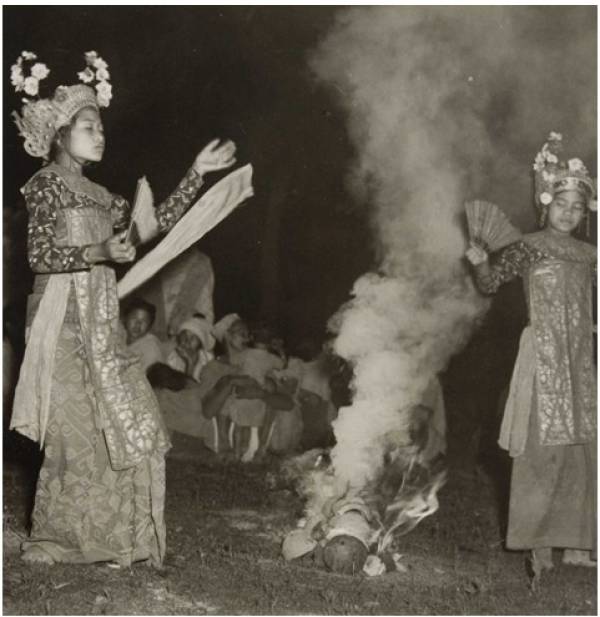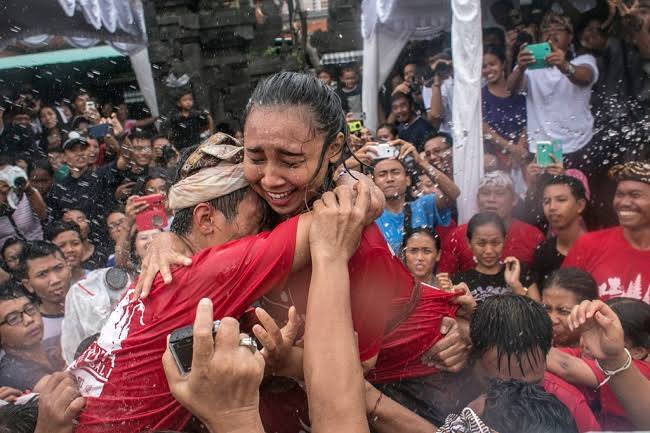Bali is known not only for its stunning natural landscapes and luxury resorts, but also for its deeply rooted spiritual and cultural traditions.
One of the island’s most revered ritual performances is the Sanghyang Dedari dance, a sacred tradition believed to protect local communities and cleanse the environment from negative forces.
What is Sanghyang Dedari Dance?
Sanghyang Dedari is a traditional Balinese dance that originated from pre-Hindu spiritual beliefs.
Unlike other Balinese dances created for entertainment or storytelling, this one serves as a religious ritual meant to ward off misfortune and restore harmony between the seen and unseen worlds.
This dance is considered highly sacred. Every aspect of the performance—its timing, location, participants, and musical elements—carries deep spiritual meaning. It is not just a performance but a medium for divine connection.
Historical Background and Origins
The dance is believed to have first appeared in the village of Bona, Blahbatuh, in Gianyar Regency.
During a severe epidemic, local girls were playing near the temple after a religious ceremony and began singing a traditional chant.
Suddenly, one of them started to dance in a trance-like state, believed to be possessed by a holy spirit.
The villagers saw this as a divine sign. Since then, the dance was ritualized and performed with the intention of protecting the village and driving away sickness and misfortune.
Spiritual Elements in the Dance
Sanghyang Dedari incorporates three key components that reflect its sacred nature:
- Sacred fire used during the performance as a form of spiritual purification
- Traditional chanting known as gending Sanghyang to invite spiritual presence
- Dancers in a trance state, believed to be possessed by celestial beings
These elements distinguish the Sanghyang Dedari from secular dances and highlight its role as a spiritual ritual rather than entertainment.
The Ritual Process
The preparation begins about two weeks before the ceremony. Dancers are chosen from young girls aged 8 to 11, considered spiritually pure.
Three days before the performance, a ceremony called matur piuning is held to request permission and blessings from the divine.
On the day of the ritual, the dancers pray together at Pura Pejenengan and undergo a trance-inviting ritual called ngukup at Pura Paibon.
Once believed to be possessed by sacred spirits, they begin the dance.
The performance usually takes place in two important locations: the central crossroads of the village, known as Catus Pata, and at Pura Pejenengan.
A single ritual cycle may include up to five performances within a 15-day period.
The dancers, in a state of trance, perform synchronized movements without conscious awareness. Some dancers may not enter a trance and are not allowed to perform.
The ritual concludes with a ceremony called nyineb, marking the release of the spirits. All ceremonial items used in the dance are then returned to the sacred temple, Pura Setra Sanghyang.
Sanghyang Dedari in Contemporary Times
While traditionally performed only during sacred ceremonies, Sanghyang Dedari is occasionally showcased as a cultural performance, particularly for tourists visiting areas like Ubud.
These modern versions are symbolic and do not include trance states, in order to respect the sacred nature of the original ritual.
The Balinese community and cultural institutions continue to preserve the authentic form of the dance while educating visitors about its spiritual significance. (BT)
Image source: bulelengkab.go.id





